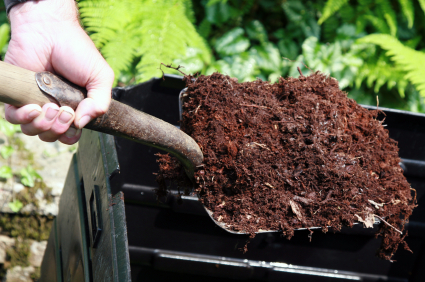Organic agriculture is a fine luxury for the rich, but it could never feed the world as global population moves to 9 billion.
That’s what a lot of powerful people — including the editors of The Economist — insist. But the truth could well be the opposite: It might be chemical-intensive agriculture that’s the frivolous luxury, and organic that offers us the right technologies in a resource-constrained, ever-warmer near future.
That’s the conclusion I draw from the latest data of the Pennsylvania-based Rodale Institute’s Farming Systems Trial (FST), which Rodale calls “America’s longest running, side-by-side comparison of conventional and organic agriculture.” Now, Rodale promotes organic ag, so industrial-minded critics will be tempted to dismiss its data. But that would be wrong — its test plots have an excellent reputation in the ag research community, and the Institute often collaborates with the USDA’s Agricultural Research Service.
Housed on Rodale’s 330 acre farm, the FST compares three systems for growing corn and soy, the first two organic and the third conventional: 1) one based on rotating feed crops with perennial forage crops for cows, and fertilizing with manure; 2) another based on rotating grains with cover crops, with fertility coming from nitrogen-fixing legumes; and 3) a system reliant on synthetic fertilizers and pesticides.
Rodale’s researchers have been comparing crop yields and taking soil samples on these test plots for 27 years. Their latest findings? The three systems have produced equivalent corn yields over the years, while “soybean yields were the same for the manure and conventional system and only slightly lower for the legume system.”
So the old canard about how organic ag produces dramatically less food than chemical ag has been debunked, yet again.
 Corn in the organic-legume (left) and conventional (right) system during the dry summer of 1995. Both were planted on the same day, with the same variety but only the conventional corn is showing signs of water stress. Organic corn yields that year were 29 percent higher than those of the conventional corn.Photo and caption: Rodale InstituteBut it gets more interesting. As the globe warms up, increased droughts are likely to reduce global crop yields. The ag-biotech industry is scrambling to come out with “drought-resistant” GMO crops. But organic ag might already have that covered: “In 4 out of 5 years of moderate drought, the organic systems had significantly higher corn yields (31 percent higher) than the conventional system.”
Corn in the organic-legume (left) and conventional (right) system during the dry summer of 1995. Both were planted on the same day, with the same variety but only the conventional corn is showing signs of water stress. Organic corn yields that year were 29 percent higher than those of the conventional corn.Photo and caption: Rodale InstituteBut it gets more interesting. As the globe warms up, increased droughts are likely to reduce global crop yields. The ag-biotech industry is scrambling to come out with “drought-resistant” GMO crops. But organic ag might already have that covered: “In 4 out of 5 years of moderate drought, the organic systems had significantly higher corn yields (31 percent higher) than the conventional system.”
Moreover, while conventional ag struggles with the “superweed” problem, brought on by Monsanto’s herbicide-tolerant GMO crops, organic ag is showing it can coexist with weed pressure without sacrificing yield: “Corn and soybean crops in the organic systems tolerated much higher levels of weed competition than their conventional counterparts, while producing equivalent yields.” Meanwhile, herbicide use in the conventionally managed plot fouled groundwater:
Herbicides were only detected in water samples collected from the conventional system. In years when the conventional rotation had corn following corn, during which atrazine was applied two years in a row, atrazine levels in the leachate sometimes exceeded 3 ppb, the maximum contaminant level set by EPA for drinking water. Atrazine concentrations in all conventional samples exceeded 0.1 ppb, a concentration that has been shown to produce deformities in frogs.
In terms of building robust ag systems in an era of climate change, the results related to soil are probably the most interesting. It turns out, the organic outperformed conventional in both building organic matter and retaining soil nitrogen. In the past 15 years of the study, the organic systems have continued building soil carbon, while the conventional system actually lost carbon. (For more on the question of soil carbon and soil, see my piece from last year’s special series on nitrogen.)
The soil-carbon factor probably explains why organic outperforms conventional in drought years: carbon-rich soil tends to retain water better. And indeed, the results bear that out:
Water volumes percolating through each system were 15-20% higher in the organic systems than the conventional system, indicating increased groundwater recharge and reduced runoff under organic management.
Inevitably in the comments section below, someone will ask about the manure. How much land does it take to support sufficient cows to produce enough manure to replenish organic fields? But the Rodale results show that nitrogen-fixing legume crops can greatly reduce the contribution needed from livestock.
And anyway, let me turn that question around. Where do industrial agriculturalists intend on getting the synthetic nitrogen for their system — from what energy source? The main feedstock is natural gas; but the easy natural gas has been tapped in the United States. That leaves us reliant on geopolitically unstable foreign suppliers — or on domestic shale gas, which relies on the water-fouling process of hydrofracturing. And where do they plan on getting phosphorous?
In the end, organic ag looks like the robust and wise approach to responding to population growth and climate change, and chemical ag looks like the gambler’s approach — a luxury for the well-heeled folks who own shares in the agribiz industry.



